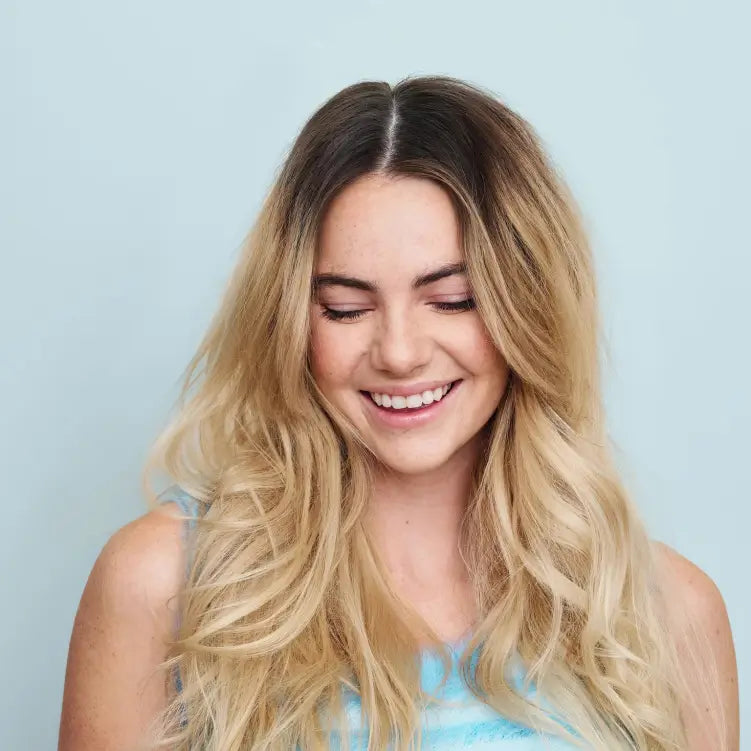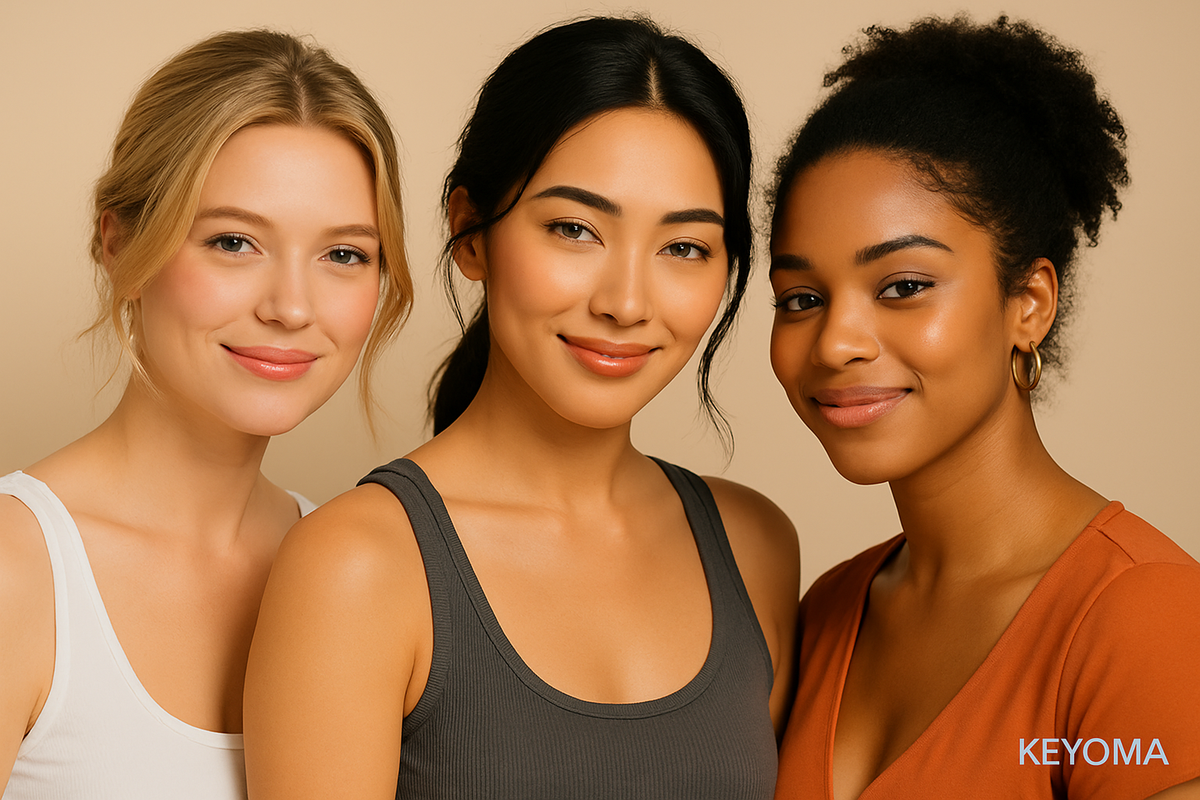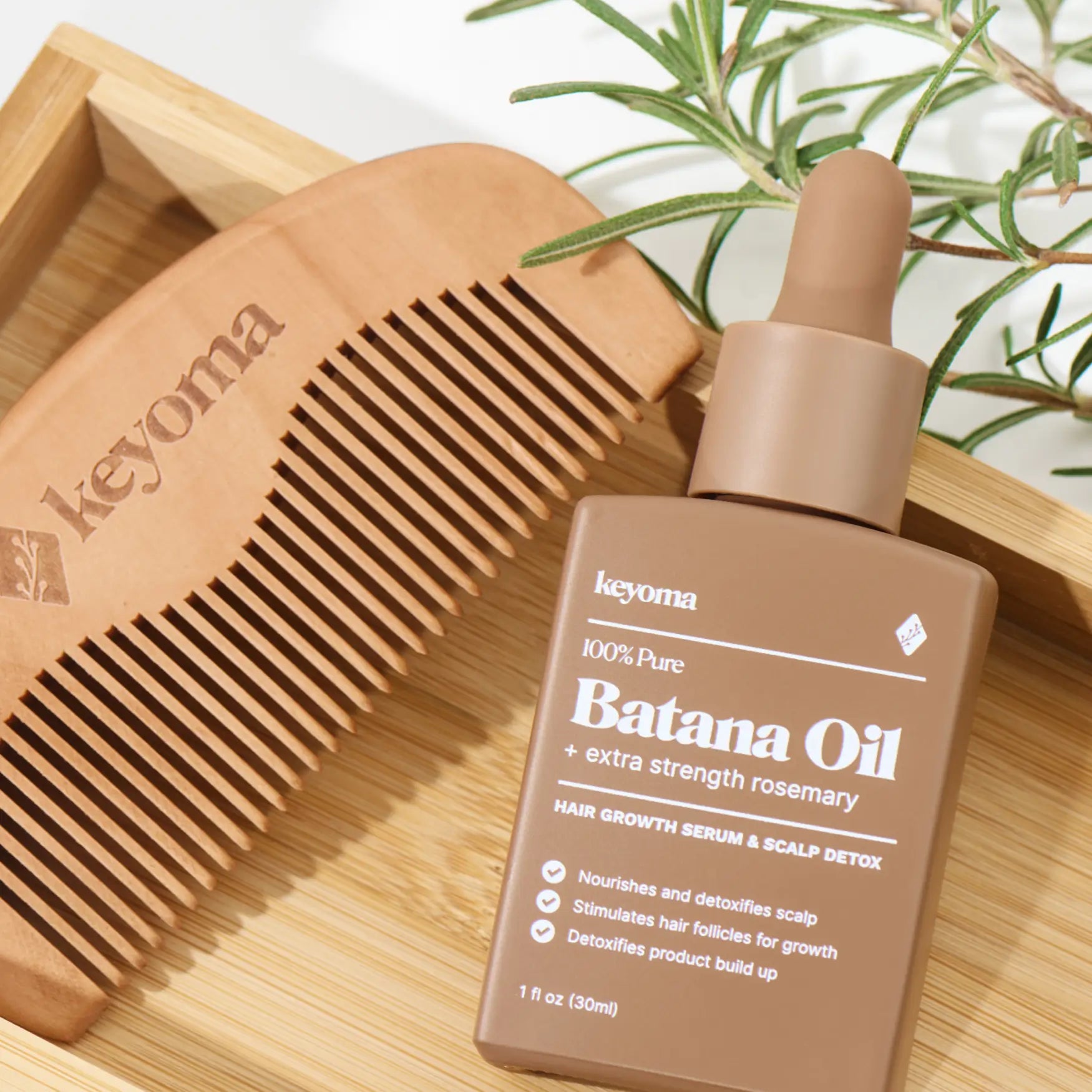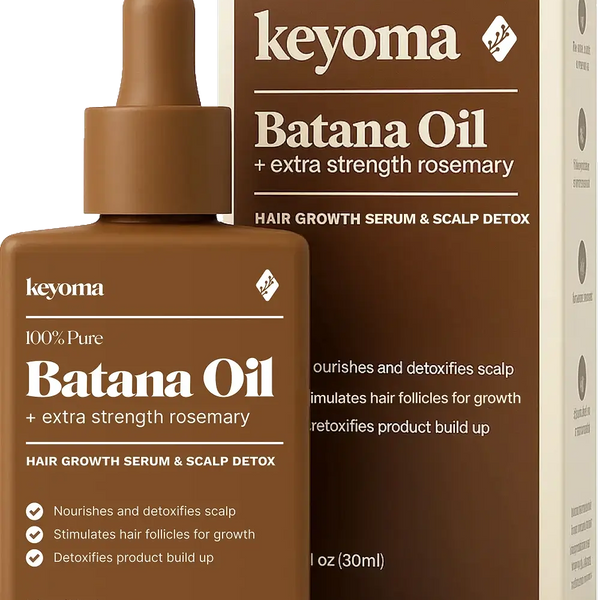In this article
Here’s the thing about those sleek, snatched hairstyles we all love—they look amazing, but your hairline pays the price. That subtle soreness near your temples after taking out your ponytail, or those tiny hairs that never seem to grow back along your edges? That might just be your scalp trying to tell you something.
Tight hairstyles, especially when worn often, can cause traction alopecia, a form of hair loss triggered by constant tension on the roots.
It doesn’t happen overnight, but over time, that repeated pulling weakens follicles and leads to thinning around the edges or even small bald spots.
The good news is you don’t have to give up style for scalp health. In this article, I’ll share low tension hairstyles that look chic, feel comfortable, and let your hairline breathe. Because caring for your edges shouldn’t mean sacrificing your look.
What is a Low Tension Hairstyle?
A low tension hairstyle is any style that keeps your hair in place without pulling at your scalp or edges. You’re not yanking it into tight ponytails or over-styling your roots. Instead, you're letting your scalp breathe while still looking put together.
The point isn’t just comfort. It’s to protect your follicles from breakage, thinning, or traction alopecia caused by constant strain. These styles give your strands a break from high-manipulation routines and help you hold on to length, density, and a healthy hairline.
11 Low Tension Hairstyles to Try
Loose Claw-Clip Twist
A loose claw-clip twist gathers your hair into a soft hold at the back, secured with a medium to large claw clip. Simply put, you twist your hair back, clip it gently, and you're done.
No tight pulling, no tension headaches, no creasing your strands with rubber bands. You can let a few pieces fall around your face or tuck them away. It works either way.
The clip spreads out the pressure instead of yanking at a single point like elastics do. And since there’s no tight base pulling at your edges, it lowers the risk of traction alopecia, especially if you’re using smooth, rounded clips or ones lined with satin to avoid snagging.
This one's perfect for medium to long hair, especially if it's wavy, straight, or stretched. If you’re dealing with postpartum soreness or recovering from tight styles, this is the breather your roots will thank you for.
Low, Soft Pony With Silk Scrunchie
Gather your hair at the nape of your neck, let it sit naturally, and wrap it just once or twice with a silk or satin scrunchie.
The silk glides over your hair instead of digging in, reducing friction and preventing breakage. Unlike rubber bands or skinny elastics, it won’t leave a dent or pull on your edges. It’s also great if you’re managing shedding or trying to grow back baby hairs after postpartum or braids.
This one’s especially good for thick hair that gets weighed down in high styles, or fine, fragile hair that breaks easily with regular ties. It’s also perfect for gym days, errands, or lazy afternoons when your hair just needs to chill.
Here's a quick tip: go with a wider scrunchie for more support, especially if you have a lot of hair.
Loose Braid (One or Two) With Padded Tie
With this one, the key is to keep it loose from the start, either a single braid down the back or two parted braids, tied off with a padded or satin-lined tie. Nothing too tight. Nothing pulling.
What makes this hairstyle low-tension is that you’re not anchoring the braid close to the scalp. That relaxed base keeps your edges safe and your roots stress-free. Plus, using a soft tie at the ends avoids snapping and breakage that happens with tight elastics.
If you’ve got thick hair or curls that tangle easily, this is a protective style that lets you keep things neat without stressing your strands. It works well on stretched 4C hair, wavy textures, or even second-day curls that need some structure without heat or pulling.
Want it to last longer? Lightly mist your hair with a leave-in or apply a nourishing oil like rosemary-infused batana oil before braiding. It adds slip and moisture without buildup, and your hair will still feel soft when you take the braid out.
Halo Braid With Gentle Grip
A halo braid wraps loosely around your head, starting from one side and curving all the way around to the other. It ends up looking like a fancy crown.
The braid doesn’t need to be anchored close to the scalp. Use a gentle grip and avoid slicking everything down. You can even braid loosely, then pin sections with open bobby pins or spiral hair pins.
It’s a great option if you’re going to an event, want to keep your hair off your neck, or just feel like switching it up without risking your edges. It works best on stretched or detangled hair so the braid forms smoothly.
Loose Flat Twists
Loose flat twists are created by parting the hair and twisting two large sections close to the scalp. But unlike tight scalp styles, you don’t pull them taut. Each twist sits softly against the head, following the natural direction of your hair.
This works beautifully on coily and curly textures, especially 4C hair that stretches well but needs some direction without tension. It’s also ideal for tender scalps or when you’re transitioning from tight braids and want something breathable that still keeps hair protected.
If you’re sleeping in them, throw on a satin scarf or bonnet to keep everything smooth and intact by morning.
Puff With Satin Headband
A puff is one of those loose styles that's simple to execute: you just gather your hair upward and let it bloom naturally. Then secure it with a satin-lined headband or a stretchy band that’s not too snug. It should feel soft and airy, not tight and snatched.
This style is great for high-density curls and coils, especially when you want to stretch your wash-and-go or preserve an old twist-out. If your scalp is feeling sensitive or your edges need a break, this gives you height and shape without the pull.
Flexi-Rod Set
Flexi-rods let your hair curl and set without the heat. You just wrap damp or slightly stretched hair around each rod, twist it upward, and let it air dry—or sit under a hooded dryer if you're in a rush. When you take them out, you get soft, bouncy curls without tugging at the scalp.
This is one of the most underrated tension-free styles out there. Since you're not anchoring your hair to the scalp or pulling it into tight sections, there's zero root stress.
It works great for all hair types but especially shines on coily and curly textures. It gives shape and movement without the daily styling.
If your hair tends to shrink too much, try stretching it lightly before wrapping for more elongated curls.
Low Messy Bun With Spiral Pin
This style pulls your hair into a loose bun that sits right at the nape. You twist the length gently, coil it into a bun, and secure it with one or two spiral pins. Spiral pins hold the bun by twisting into the coil itself, not by squeezing your roots.
That said, because you’re not using a band, there’s less pressure on your hairline and crown.
Skip the urge to neaten every flyaway. It's actually doing your scalp a favor. Wrap with a satin scarf at night if you want to keep it tidy till morning.
Two-Strand Twists Set Loosely
In a two-strand twist, you divide your hair into sections—medium to large, depending on how thick it is—and twist two strands together from root to tip.
Because each twist stands on its own, there’s no constant tension across the scalp. That means less breakage and fewer sore spots. It’s especially good if you’re growing your hair out, recovering from braids, or just want a protective style that doesn’t strain your edges.
This works best on textured or coily hair that holds shape easily. If your hair’s finer or straight, you can still try it. Just use a bit of styling cream or leave-in to help it grip.
Low-Tension Mini Plaits
Mini plaits are small, individual braids parted across the scalp. You section your hair evenly, then braid each part loosely from root to tip. Each plait should move freely at the base.
Mini plaits work well if you’re stretching your hair between washes or want something you can keep for a week or two without heavy upkeep. They’re light, breathable, and low manipulation.
Barrel Rolls
Barrel rolls are a loc-friendly, low-tension updo where sections of hair or locs are rolled in the same direction and pinned flat to the head. You start by parting the hair into medium or large sections, roll each toward the center or back, and pin as you go.
This is one of the gentlest ways to style locs or thick natural hair. Because you’re rolling instead of twisting or braiding close to the scalp, the tension stays minimal. The style keeps your roots protected, reduces manipulation, and helps retain moisture along the length of each section.
Barrel rolls work best for locs that are medium to long, but they also suit loose natural hair if it’s pre-stretched or lightly twisted.
Tips for Keeping Tension Low and Your Hair Healthy
Even low-tension styles can go wrong if you're not paying attention to how your scalp and hair feel. Below are quick, clear ways to keep things truly tension-free, from how it feels on your scalp to what you're using day and night.
-
If it hurts, it's too tight. Any style that leaves your scalp sore or gives you headaches isn't low tension. If your hairline feels stiff or you notice bumps or tenderness, take the style down and redo it more loosely.
-
Use soft accessories. Go for silk or satin scrunchies, padded ties, or coated spiral pins. Skip rubber bands or rough elastics that grip too hard and cut into your strands.
-
Watch your parting. Sharp, tight parts repeated in the same place can wear down sections of your scalp. Try alternating your part or going for chunkier sections when braiding or twisting.
-
Sleep with the right accessories. Use a satin or silk scarf, bonnet, or pillowcase at night. It reduces friction while you sleep, helps retain moisture, and keeps styles from tugging as you toss and turn.
-
Moisturize regularly. A dry scalp can make tension feel worse. Use a light oil like rosemary-infused batana, jojoba, or grapeseed oil to keep your roots hydrated without buildup.
-
Avoid piling styles on top of tension. Don’t go from tight braids to tight buns the next day. Mix in loose styles to give your scalp time to rest.
-
Check your roots after styling. If you see raised bumps, redness, or tiny white dots near the hairline, your follicles are under stress. Undo the style and let your scalp recover before redoing it.
What Feels Good is What Works Best
There’s no shortage of low tension and tension-free hairstyles to pick from. Whether you’re into soft twists, loose puffs, or protective mini plaits, it all comes down to what fits your routine, hair type, and comfort. But the thing that matters most is this: Do the style right.
Because what use is a clean, sleek hairstyle if it leaves your scalp sore? It's not protective. It's damaging, and over time, can wreck not only your scalp but also your confidence.
Give your roots room. Let your hairline breathe. And prioritize what feels good.
Want more scalp-friendly tips and styles that put your hair health first? Head over to the Keyoma Blog where we share simple, science-backed ways to care for your hair!
Featured Product
100% Pure Batana Oil + Rosemary









